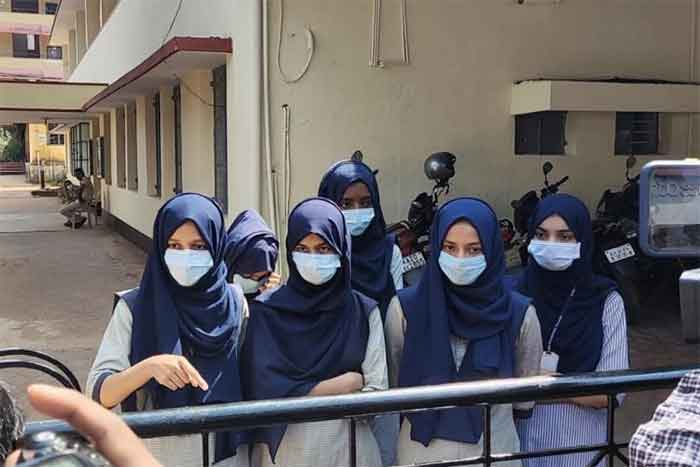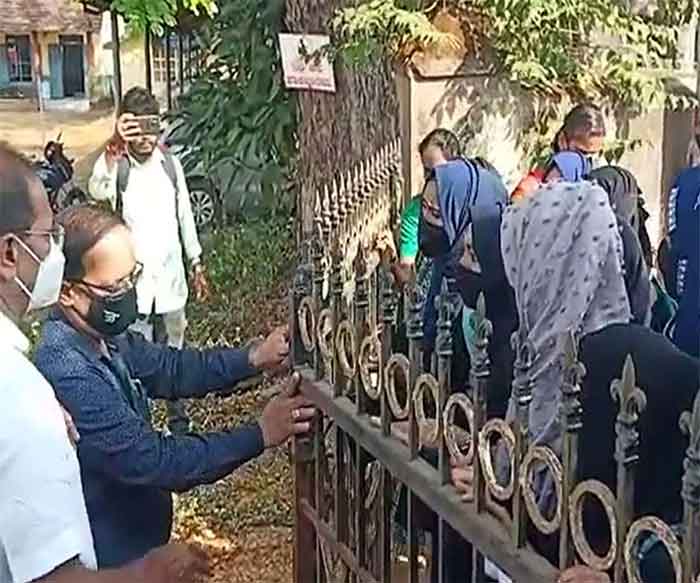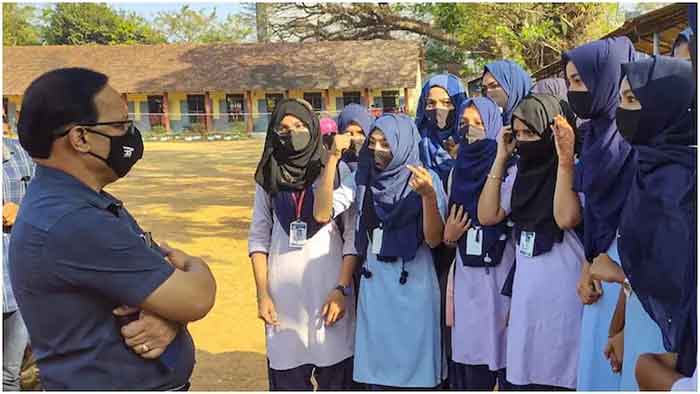
Anti-Muslim noise raised in Karnataka is just a mild indicator of this being a part of certain right-elements’ communal campaign ahead of coming elections. Not much needs to be said about this being directed towards gaining media attention as well as hoping to please top most leaders holding similar communal views.
Karnataka is scheduled to face Assembly election in around a year’s time, May 2023. The state chief minister Basavaraj Bommai, sworn in on 28 July 2021 has not yet completed a year in office. It may be recalled, soon after 2018 Assembly election, the state witnessed several political turns. Karnataka was headed by a coalition of Janata Dal-Secular (JD-S) and Indian National Congress (INC) with HD Kumaraswamy (JD-S) as Chief Minister till July 2019. Resignations of several Assembly members from INC and JD(S) led to collapse of coalition government and with BS Yediyurappa as Chief Minister, Bharatiya Janata Party (BJP) stepped into power.
When 2018 electoral results were announced, with 104 seats BJP was 9 short of majority in 224-member Assembly. Congress had won 78 seats, JD(S) – 38 and others – 2. However, even before half the term was over, BJP formed the state government with 121 members, leaving Congress with 69 and JD(S) -32.
Heading the state government was apparently beset with too many problems for Yediyurappa and he had to resign on July 26, 2021 to be succeeded by Bommai. With eyes set on retaining this chair, Bommai has apparently not refrained from using anti-Muslim strategies. However, it would be erroneous to limit analysis of hijab-controversy and similar issues only to communal angle.
Muslims form roughly 13% of Karnataka population, a percentage which bears hardly any political threat. There are only seven Muslim legislators in the present Karnataka Assembly, all of whom are from Congress.
Perhaps, greater importance needs to be given to women’s stature in Karnataka. Of the state’s population, around 50.9% are male and 49.1% -female. Importance accorded to women politically and socially is not marked by their representation in Karnataka Assembly. Seven members or 3.1% of the present Assembly are women. Only 216 of 2,655, that is 8% of total candidates in fray for elections were women. Considering that women bear similar political standing practically in all parts of the country, just Karnataka cannot be blamed for their limited representation in its Assembly.
The same may be apparently said about another factor women suffer from across the country. This refers to their abuse over dowry. The highest number of cases registered under Dowry Prohibition Act from Indian metros in 2018 was from Bengaluru. The highest number of dowry deaths among southern metros was also from Bengaluru. Of the 851 cases reported under Dowry Prohibition Act in 2018, 692- 81.3% were from Bengaluru.
Undeniably, these statistics do not represent the actual picture of abuse women are subjected to. There are probably numerous cases which are not reported. Nevertheless, this point has been deliberately made to highlight negative approach held towards women in general and the abuse which majority of them are probably suffering from.
The emphasis is on two points. One is the negative approach held in general towards women. Second, the ease with which right-winged elements arouse communal propaganda against minority communities, particularly Muslims. From one angle, the timing of hijab-issue cannot be de-linked from forthcoming elections. Secondly, the temporal linkage with a right-winged person talking about abuse of Muslim women in another state cannot be ignored. Both issues are strongly suggestive of negative approach held towards women in general. The communal label, targeting Muslim women, apparently has been deliberately exercised to probably earn media attention and support of their right-winged associates. In the process, these elements have succeeded to a degree in letting negligible importance being accorded to their pathetic (call it discriminatory or whatever) approach held towards women in general.
What is more deploring is the probable “pleasure” gained by these elements in assuming that adding the religious-label “justifies” their abuse of women. This is tragic indeed. Clearly, at least some importance should be accorded to bias against fairer gender in Karnataka and in most parts of the country, while deliberating on comments of communal elements against Muslim women. These cannot be segregated from the strong politico-social bias held against women, irrespective of their religious identity. The gender-bias cannot be justified by using religious label.
With respect to hijab-issue, as mentioned earlier, it cannot be de-linked from forthcoming Assembly election in Karnataka. Besides, irrespective of legal complexities linked with hijab-controversy in Karnataka, it cannot be considered appropriately without taking into account socio-political complications linked with it. If decisions have been taken in keeping with specific school uniforms, reference to only these (school uniform) makes sense and would be sufficient. Reference to whether hijab is considered Islamic or not by certain authorities does not seem appropriate. Each individual has the right to pursue his/her religious beliefs as considered personally appropriate without disturbing peace and/or causing disturbance to others. The same may be said about use of hijab by Muslim women, skull caps by Muslim as well as Jewish men, turbans by Sikh men and so forth.
It is indeed ironical, special importance is given to displaying photos of burkha-clad women and skull-capped, bearded men at rallies addressed by certain national leaders. One is tempted to deliberate upon political relevance of such “secular-cards” in context of communal cards targeting Muslim women. If only some attention is paid to blind eye being turned towards attempt to propagate abuse of women by using religious label. Abuse of women- with or without communal angle- can be viewed as only condemnable/deplorable!
Nilofar Suhrawardy is a senior journalist and writer with specialization in communication studies and nuclear diplomacy. She has come out with several books. These include:– Modi’s Victory, A Lesson for the Congress…? (2019); Arab Spring, Not Just a Mirage! (2019), Image and Substance, Modi’s First Year in Office (2015) and Ayodhya Without the Communal Stamp, In the Name of Indian Secularism (2006).













































